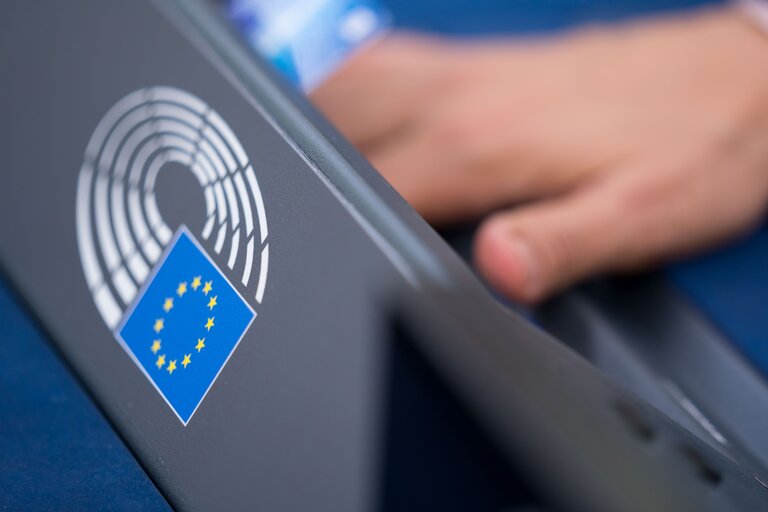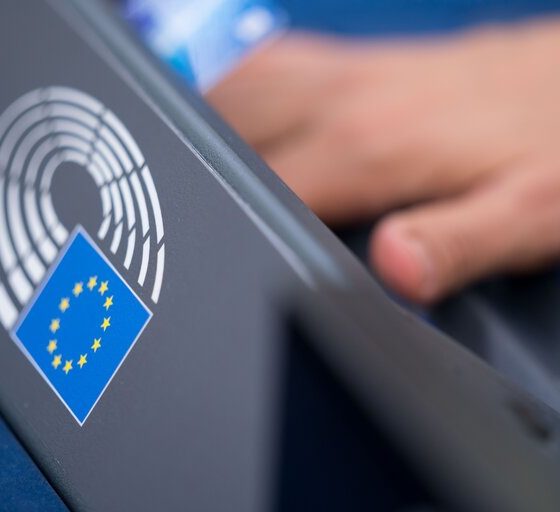The European Commission was able to reach a new compromise with member states that would maintain its 2035 new ICE vehicle ban, while introducing some new changes to its Fit for 55 plan.
After documents obtained by Reuters last week indicated that five EU member states would oppose the 2035 new ICE vehicle ban, many were worried that the proposal would stall in the Commission. However, with Italy moving to drop a request to postpone the ban by five years, the plan stands, though significant changes were implemented in order to appease both sides of the debate.
According to Automotive News Europe’s contact with European leaders, there will be many caveats introduced to the new proposal that will head to negotiations between the European Commission and the EU Parliament:
- First and most prominently, the 2035 new ICE vehicle ban will remain. However, smaller manufacturers will receive an undisclosed extension to stop selling ICE vehicles.
- Germany’s proposal of allowing new ICE vehicles that burn carbon-neutral fuels past 2035 will be included in the new proposal.
- The governments also agreed that the “European Emissions Trading System” will remain in place and will continue to pursue ever-lower carbon emissions (this is the system that allows the sale and trade of carbon credits/permits). However, the carbon credit market that will regulate the emission of heating and road transport fuel will be delayed for an unknown amount of time. A “Climate Fund” will also be established to help households pay for this new carbon credit program.
- The carbon market will be reformed with multiple changes. Most notably, the allowable carbon emissions will be reduced by 61%.
- In order to limit future carbon credit price variability, a mechanism will be put in place that would release 75 million new carbon credits into the market if the average sale price of credits goes higher than 2.5 times the average of the price from two preceding years. Lawmakers also hope this will limit market speculation.
- The Commission also decided to cut the “Social Climate Fund” from 72 billion euros to 59 billion euros. This fund is dedicated to helping households afford many carbon-reducing products, including new efficient heating and cooling systems, personal renewable energy systems, reduced emission mobility products (including electric vehicles), and more.
Overall, representatives seemed happy with the changes made. Many who opposed the postponement of the new ICE vehicle ban celebrated that it was kept in the proposal, while those who initially proposed the postponement noted that the extension given to smaller manufacturers was necessary.
Many from both sides, as well as manufacturing groups, maintained that the development of infrastructure is still very much needed and that Europe must dedicate itself to becoming more resource independent in terms of materials used in electric vehicles and other carbon-reducing technologies.
Many auto manufacturers have already backed the 2035 new ICE vehicle ban, including VW, Mercedes, Ford, and Volvo. However, some have raised more concerns than others. BMW CEO Oliver Zipse said in a statement to Automotive News Europe:
“To be very clear: the automobile industry will fully contribute to the goal of a carbon-neutral Europe in 2050, but the decision of the Council raises significant questions which have not yet been answered, such as how Europe will ensure strategic access to the key raw materials for e-mobility.”
With negotiations on the Fit for 55 EU carbon neutrality plan going to negotiation soon, it will be interesting what the final form of this legislation will look like. Still, these changes mark a significant step towards achieving compromise, and ultimately, carbon neutrality.
What do you think of the article? Do you have any comments, questions, or concerns? Shoot me an email at william@teslarati.com. You can also reach me on twitter @WilliamWritin. If you have news tips, email us at tips@teslarati.com!

News
Tesla China delivery centers look packed as 2025 comes to a close
Needless to say, it appears that Tesla China seems intent on ending 2025 on a strong note.

Tesla’s delivery centers in China seem to be absolutely packed as the final days of 2025 wind down, with photos on social media showing delivery locations being filled wall-to-wall with vehicles waiting for their new owners.
Needless to say, it appears that Tesla China seems intent on ending 2025 on a strong note.
Full delivery center hints at year-end demand surge
A recent image from a Chinese delivery center posted by industry watcher @Tslachan on X revealed rows upon rows of freshly prepared Model Y and Model 3 units, some of which were adorned with red bows and teddy bears. Some customers also seem to be looking over their vehicles with Tesla delivery staff.
The images hint at a strong year-end push to clear inventory and deliver as many vehicles as possible. Interestingly enough, several Model Y L vehicles could be seen in the photos, hinting at the demand for the extended wheelbase-six seat variant of the best-selling all-electric crossover.
Strong demand in China
Consumer demand for the Model Y and Model 3 in China seems to be quite notable. This could be inferred from the estimated delivery dates for the Model 3 and Model Y, which have been extended to February 2026 for several variants. Apart from this, the Model Y and Model 3 also continue to rank well in China’s premium EV segment.
From January to November alone, the Model Y took China’s number one spot in the RMB 200,000-RMB 300,000 segment for electric vehicles, selling 359,463 units. The Model 3 sedan took third place, selling 172,392. This is quite impressive considering that both the Model Y and Model 3 are still priced at a premium compared to some of their rivals, such as the Xiaomi SU7 and YU7.
With delivery centers in December being quite busy, it does seem like Tesla China will end the year on a strong note once more.
News
Tesla Giga Berlin draws “red line” over IG Metall union’s 35-hour week demands
Factory manager André Thierig has drawn a “red line” against reducing Giga Berlin’s workweek to 35 hours, while highlighting that Tesla has actually increased its workers’ salaries more substantially than other carmakers in the country.

Tesla Giga Berlin has found itself in a new labor dispute in Germany, where union IG Metall is pushing for adoption of a collective agreement to boost wages and implement changes, such as a 35-hour workweek.
In a comment, Giga Berlin manager André Thierig drew a “red line” against reducing Giga Berlin’s workweek to 35 hours, while highlighting that Tesla has actually increased its workers’ salaries more substantially than other carmakers in the country.
Tesla factory manager’s “red line”
Tesla Germany is expected to hold a works council election in 2026, which André Thierig considers very important. As per the Giga Berlin plant manager, Giga Berlin’s plant expansion plans might be put on hold if the election favors the union. He also spoke against some of the changes that IG Metall is seeking to implement in the factory, like a 35-hour week, as noted in an rbb24 report.
“The discussion about a 35-hour week is a red line for me. We will not cross it,” Theirig said.
“(The election) will determine whether we can continue our successful path in the future in an independent, flexible, and unbureaucratic manner. Personally, I cannot imagine that the decision-makers in the USA will continue to push ahead with the factory expansion if the election results favor IG Metall.”
Giga Berlin’s wage increase
IG Metall district manager Jan Otto told the German news agency DPA that without a collective agreement, Tesla’s wages remain significantly below levels at other German car factories. He noted the company excuses this by referencing its lowest pay grade, but added: “The two lowest pay grades are not even used in car factories.”
In response, Tesla noted that it has raised the wages of Gigafactory Berlin’s workers more than their German competitors. Thierig noted that with a collective agreement, Giga Berlin’s workers would have seen a 2% wage increase this year. But thanks to Tesla not being unionized, Gigafactory Berlin workers were able to receive a 4% increase, as noted in a CarUp report.
“There was a wage increase of 2% this year in the current collective agreement. Because we are in a different economic situation than the industry as a whole, we were able to double the wages – by 4%. Since production started, this corresponds to a wage increase of more than 25% in less than four years,” Thierig stated.
News
Tesla is seeing a lot of momentum from young Koreans in their 20s-30s: report
From January to November, young buyers purchased over 21,000 Teslas, putting it far ahead of fellow imported rivals like BMW and Mercedes-Benz.

Tesla has captured the hearts of South Korea’s 20s-30s demographic, emerging as the group’s top-selling imported car brand in 2025. From January to November, young buyers purchased over 21,000 Teslas, putting it far ahead of fellow imported rivals like BMW and Mercedes-Benz.
Industry experts cited by The Economist attributed this “Tesla frenzy” to fandom culture, where buyers prioritize the brand over traditional car attributes, similar to snapping up the latest iPhone.
Model Y dominates among young buyers
Data from the Korea Imported Automobile Association showed that Tesla sold 21,757 vehicles to the 20s-30s demographic through November, compared to BMW’s 13,666 and Mercedes-Benz’s 6,983. The Model Y led the list overwhelmingly, with variants like the standard and Long Range models topping purchases for both young men and women.
Young men bought around 16,000 Teslas, mostly Model Y (over 15,000 units), followed by Model 3. Young women followed a similar pattern, favoring Model Y (3,888 units) and Model 3 (1,083 units). The Cybertruck saw minimal sales in this group.
The Model Y’s appeal lies in its family-friendly SUV design, 400-500 km range, quick acceleration, and spacious cargo, which is ideal for commuting and leisure. The Model 3, on the other hand, serves as an accessible entry point with lower pricing, which is valuable considering the country’s EV subsidies.
The Tesla boom
Experts described Tesla’s popularity as “fandom culture,” where young buyers embrace the brand despite criticisms from skeptics. Professor Lee Ho-geun called Tesla a “typical early adopter brand,” comparing purchases to iPhones.
Professor Kim Pil-soo noted that young people view Tesla more as a gadget than a car, and they are likely drawn by marketing, subsidies, and perceived value. They also tend to overlook news of numerous recalls, which are mostly over-the-air software updates, and controversies tied to the company.
Tesla’s position as Korea’s top import for 2025 seems secured. As noted by the publication, Tesla’s December sales figures have not been reported yet, but market analysts have suggested that Tesla has all but secured the top spot among the country’s imported cars this year.










